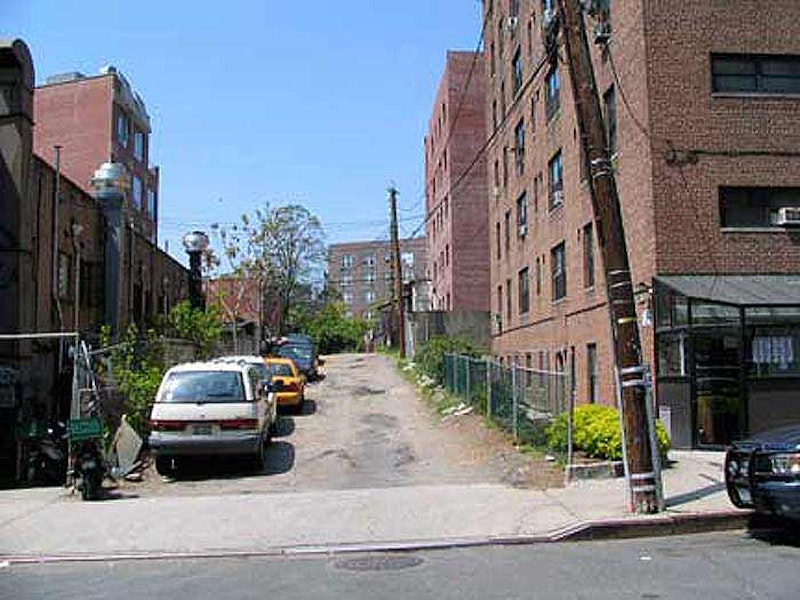I’d gone past Claremont Terrace thousands of times without giving it a second thought about what it was. It’s an alley that’s hidden along another dead end in the heart of Elmhurst, one of Queens’ busiest, most populated and diverse neighborhoods. I’d pass it, though, on the Long Island Rail Road on my way from Flushing to Penn Station, since its last remaining mansion, in a decayed, ravaged condition, was visible along the tracks. Claremont Terrace’s origins lie in American immigration, and a young businessman who made his name in the United States in the pre-Civil War era, beginning an enterprise that existed until just a couple of years ago.

Samuel Lord (1803-1889) was a British foundry worker from Yorkshire who came to the USA with dreams of entrepreneurship, opening a drapery-dry goods shop on Catherine St. in what’s now the Lower East Side in 1824, and after struggling for over a decade, he sent for his wife and children to join him in the USA. At about the same time his brother-in-law, George Washington Taylor, joined him as a partner and investor.
Lord and Taylor opened a larger store near the docks at Grand and Chrystie Sts. in 1854, at a time when Grand was among the city’s busiest shopping streets—it was close to the east side docks along South St., making importing goods a simple matter. The business became successful, both men were millionaires by the early-1860s, and were able to retire and return to England. The store moved to 20th St. and Broadway in 1902 and then to 5th Ave. and 38th St. in 1914, where it has continued an over 150-year run of success.
In 1840, while he was still struggling on the Lower East Side, though, Samuel Lord bought property in Newtown, today’s Elmhurst. Lord purchased a house at today’s Broadway and Elmhurst Ave. in 1840, and opened a country store across the road. He was committed to Newtown—he commuted by ferry to the Lower East Side each day, and evidently liked what was then a small town, acquiring over 100 acres centered around today’s Broadway where it crosses the Port Washington Branch of the Long Island Rail Road.

Above: Claremont Terrace, 1910
The Lords raised two sons and four daughters in Newtown. In 1856, Lord built four two-and-a-half story mansions for his four daughters along a semi-circular path that he named Clermont (later Claremont) Terrace—it was on a short rise—on Broadway just south of the new LIRR branch, which was built shortly after the mansions were. The above scenes are a postcard view showing two or three of the mansions.

Up until late-2006, one of them was still there; I photographed it in about 2000 or 2001 (above). By then it had lost its front porch and gained something of an indoor porch, but was abandoned and deteriorating for many years.
In 2006 construction started on a large multi-family building on Claremont Terrace, but funding dried up and the house is waiting for more money to flow in. By now, this unfinished building, that replaced an abandoned and deteriorating mansion built by dry goods and department store king Samuel Lord, has been in place for nearly two decades.
Today, the unpaved alley on a side street in Elmhurst is the only reminder that the founder of Lord & Taylor once lived there.
—Kevin Walsh is the webmaster of the award-winning website Forgotten NY, and the author of the books Forgotten New York (HarperCollins, 2006) and also, with the Greater Astoria Historical Society, Forgotten Queens (Arcadia, 2013)

